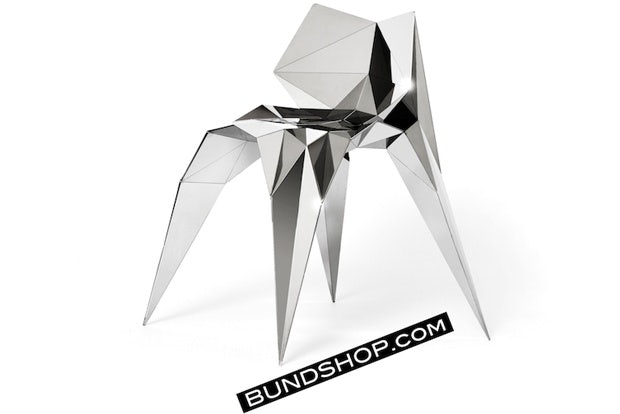Already Offering Over 50 Products From 14 Designers To 90 Countries#

“Made in China is dead, Design by China killed it,” rallies
BUNDSHOP#
, Shanghai’s newest design e-commerce site. Spearheaded by CEO Diana Tsai and Marketing Director Stephany Zoo, who have taken upon themselves to become cultural ambassadors for aspiring Chinese designers tapping into the global market, Bundshop launched on November 12, shipping over 50 products from 14 designers to 90 countries. Recently, Jing Daily chatted with Bundshop's Tsai and Zoo about their experience thus far, how they’re pursuing their mantra, and what the site has in store for this holiday season and beyond.
Jing Daily (JD): What has your experience been like thus far? What would you say has been the most challenging for Bundshop?#
Bundshop (B)#
: We came up with the idea in January to build a B2B platform in China, but weren’t really sure what that platform would look like. We saw that there weren’t Chinese designers in the international market, then the question became, why is that? Before building something entirely isolated from the reality of what Chinese designers needed, we basically threw ourselves into the design community in Shanghai and did many interviews back-to-back.
The question we constantly asked was why is it that you have this amazing content, these beautiful designs, and your stories aren’t reaching international markets? And the answers we got back were, right now if we want to sell abroad, we really can’t. It’s very difficult for us to get into B2B channels and control the quality of our brands and the projection of our story. If we’re online, we have a couple of challenges. First the platform that we can use, like Ebay, Etsy, and Amazon, with each of these platforms, our brand is diluted. It’s the same effect on Taobao. The other option is for a designer to have his or her own website, at which point they're on their own with copyrighting, translating, marketing, distribution and logistics, and when you have to handle all of that as a small brand or designer, there’s pretty much no way to design anymore.
So, listening to that, clearly, there’s a couple things going on. First, we need to create a platform, that is brand-consistent. We have to create something that is aesthetically as beautiful as what our designers are creating, so it has to be really, really comprehensive. Second, it has to be way more than just selling products, it has to be telling stories. We’re not just crossing geographical boundaries, it’s also very much cultural boundaries and facing pre-judgments of Western consumers about Made in China and the concept of manufactured in China, which means you really have to communicate on an emotional level.
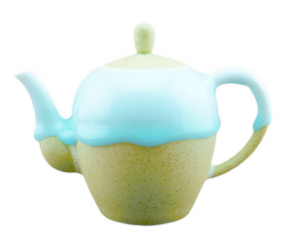
JD: Having recently launched, how’s the reception to Bundshop been so far?#
B#
: It’s been quite good, actually. We always knew that there was going be a lot of interest in the concept of Chinese design. What it comes down to now is market research and analysis into which products sell well, which designer’s story. It’s always going to be an optimization game at this point. It’s going to take time to optimize our platform and the way we present our designers and the products we select. In terms of sales, they’re trickling in. We’re just starting out, so it’s definitely going, but the challenges of building in that referral system and incentive to actually drive sales is something that we are concerned about.
First and foremost, we really believe in giving customers this experience that’s kind of extraordinary, from handwritten notes to emails, to really show them our appreciation for not just buying our products but supporting a platform that really seeks to change how the world perceives a country of creative people.
JD: Do you see a trend in terms of the demographics and products customers are most interested in?#
B#
: In terms of products and which products have shown to be the best-selling, John Meng’s lamps, the vintage upcycled lamps, [in particular Patriot and Beacon], have been doing very well. They’re in the low hundreds of dollars, not very expensive, great and easy to ship. At the same time, our Sozen vases have been doing very well too -- the bamboo and ceramic vases. NonoMuaks has also done very well. Compared to our other designers, they’re a bit more of a refined brand, very street style, very bold. Their price points are a bit lower than the rest of our brands.
Those are the three brands that are doing the best right now. In terms of early adopters and who is buying, we actually have more orders from Shanghai than we had expected. The expat community in Shanghai has taken to this very well. Some of our goods make really good presents back home, you know it’s the holiday rush. In Shanghai, you can go to one of the street markets and buy something and you’re not guaranteed of the quality of that product. With us, of course we guarantee the quality of our products, so customers tend to feel a lot more secure buying with us. Also, we ship to the US, which makes it so much easier. You don’t have to carry a huge porcelain plate or a very heavy stone incense burner in your luggage.
Shanghai has taken to us very well. Also, ABCs (Chinese-Americans) in the States. That’s a demographic we had expected. Our products carry a lot of cultural meaning and importance to them, and they don’t only support them from a product perspective, but from a personal, heritage point of view.
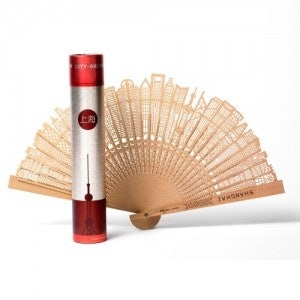
JD: Do you find your customers are young or older?#
B#
: At this point, we don’t have those kinds of demographics. From the interaction we have on Facebook or Twitter, they do tend to be younger, in their early- to mid-twenties. Another demographic that we see emerging is middle-aged housewives -- it’s that Pinterest crowd. We are actually very active on Pinterest. We think that we may be targeting an older demographic there than we’ve hit with our other press and social media activities.
JD: How are you reaching potential customers?#
B#
: Of course, we’re on Facebook. We try to post different photos and interesting articles -- we try to be a source of knowledge for design in China. On Twitter, we do the same thing. We tweet a lot of our products and interesting articles about China, whether it be design or fashion, or any other form of arts. We’re big on Pinterest. We also do our digital magazine on Tumblr, and a lot of press outreach. We actually really like targeting smaller blogs. For one thing, they’re much more willing to work with us, but also because their readers tend to be earlier adopters. Moving forward, we’ll be targeting Fancy as one of the means to drive sales onto our own website. We also use websites like Wanelo and Svpply, websites where people are looking to discover new and exciting products.
In our heads we have a very specific target market. It’s this yuppie, 23-35 year old who isn’t in the bracket yet to buy art, but appreciates art and cultured conversations, and wants a product that is unique that has a story to it. They’re the ones who, when they have dinner parties and friends come over, their friends will ask where they got this new plate set or that vase.
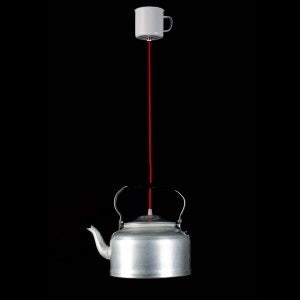
JD: So, right now the priority for you is more promotion, more exposure, and more attention?#
B#
: Yes. At the end of the day, we’re an e-commerce website because we have to be. On one side, we have to make a living. This is a business. But on the other side, what we care more about than anything in the world is helping rebrand China from "Made in China" to "Designed in China." If we could, we would just give away all of our products to show everyone how amazing Designed in China is and the quality of our goods. So a lot of what we do is about getting more exposure for China, and these designers, as well as for us.
JD: As you say, “Made in China is dead. Design by China killed it.” Where do you think the future of design is headed in China?#
B#
: Just as "Made in Italy" represents artistry and passion, "Made in Germany" represents meticulous attention to detail, and "Made in Japan" represents minimalism and cutting-edge technology, "Made in China" has its own characteristics too. The difficulty is that Made in China has not yet found its identity.
As David Jia explained it, "To me, the identity of Chinese Design is warmth and all-encompassing." In terms of our designers, most are in their thirties and have a very specific Chinese heritage that is deeply embedded in their work. What they make has a very Chinese taste to it, but this new generation of designers coming up right now that is being trained in design and art schools with a more Western eye for design. The window of designers, now mature designers, offers the world a glimpse at the first designs born from China's opening to the international world. It will likely be decades before this style happens again, when the current class of industrial design students is ready to turn inwards to their roots, rather than outwards to western academic education, for inspiration.It is this cycle in which art kind of turns in on itself, this general ebb and flow.
Right now, the designers are so introspective in terms of their own heritage, so right now what they design is very China related. But maybe in the next ten years, it’ll be a more of a Western imitation, and it’ll come back as a backlash and lead to a revival of more ancient Chinese art forms.
JD: So, you’re definitely seeing an internal shift in Chinese design culture? As much as you’re trying to change the Western perspective of Chinese design, Chinese design is changing itself.#
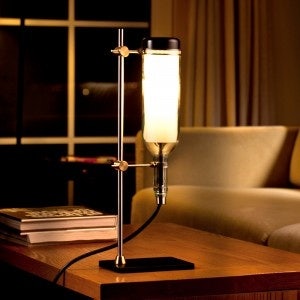
B#
: Right. When you look at our designers who are in their thirties, none of them have a formal design background. A lot of them come from calligraphy, or a lot of them have parents who are classically trained artists, which is why Chinese heritage is so deeply embedded in their design identity. But, now that there are so many design schools that do teach very Western styles, churning out the next generation of designers who are just graduating now. They have less of a connection and they’re just more of a rebellious class. Most likely, their parents wanted them to go into engineering, something more conventional. They said no, I want to go into design.
We’ll see, but perhaps it’ll be a complete backlash to this previous generation in design where China is very visible in their design. But, of course, when you’re rebelling against something, that something is very intrinsically inside what you create. So, perhaps we’ll see China emerging in very unexpected places in the future.
JD: Do you plan to remain an e-commerce website? What can we expect from Bundshop next?#
B#
: We started out wanting to be a kick-starter for design in China. It’s possible that we’ll go back once we have a consumer base that trusts us to being a crowd-funding platform for Chinese design. Each one of these designers is a case study for us to see what kind of branding works and doesn’t work in places like the US. So, perhaps we’ll transition into more of a brand consultancy to gain market entry in the Western world.
